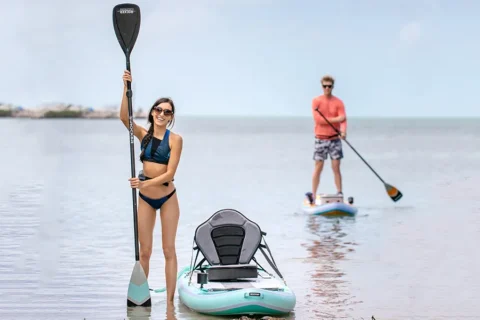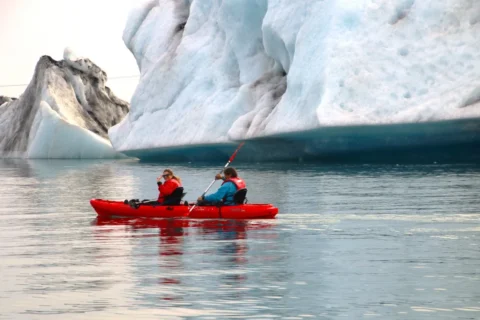Launching a kayak rental business can be an exciting and profitable venture for outdoor enthusiasts. With the growing interest in outdoor recreational activities, kayaking offers an excellent opportunity to capitalize on this trend. This comprehensive guide will walk you through every step necessary to establish and run a successful kayak rental business, from initial planning to daily operations and long-term growth strategies.
Kayak Rental Business Table of Contents
- Market Research and Planning
- Business Registration and Legal Requirements
- Choosing a Location
- Acquiring Equipment
- Setting Up Operations
- Marketing and Promotion
- Customer Service and Safety
- Financial Management
- Sustainability Practices
- Expansion and Diversification
1. Market Research and Planning
Before diving into the kayak rental business, conducting thorough market research is essential. This involves understanding the local demand for kayak rentals, identifying your target market, analyzing competitors, and determining the ideal pricing strategy.
1.1 Understanding Demand
Identify the popularity of kayaking in your chosen location. Look for areas with bodies of water such as lakes, rivers, or coastal regions where kayaking is feasible. Research local tourism trends and outdoor activity preferences.
1.2 Identifying Target Market
Your target market may include tourists, local outdoor enthusiasts, families, and groups. Understanding the demographics, interests, and spending behaviors of your potential customers will help tailor your services and marketing efforts.
1.3 Analyzing Competitors
Study existing kayak rental businesses in your area. Analyze their strengths, weaknesses, pricing, services offered, and customer reviews. This analysis will help you identify gaps in the market and opportunities for differentiation.
1.4 Pricing Strategy
Set competitive yet profitable rental rates. Consider hourly, half-day, and full-day rental options. Evaluate the costs of maintenance, storage, staffing, and marketing to ensure your pricing covers expenses and generates profit.
2. Business Registration and Legal Requirements
Establishing a legitimate business requires fulfilling several legal obligations. This section covers the essential steps to ensure your business operates within legal boundaries.
2.1 Business Structure
Choose a suitable business structure (e.g., sole proprietorship, partnership, LLC, corporation). Consult with a legal expert to determine the best structure for your situation, considering liability, taxes, and management.
2.2 Registering Your Business
Register your business name with the appropriate government authorities. Obtain any necessary licenses and permits required for operating a kayak rental business in your area.
2.3 Insurance
Invest in comprehensive insurance coverage, including general liability, property insurance, and workers’ compensation if you hire employees. Insurance protects your business from potential risks and liabilities.
2.4 Environmental Regulations
Ensure compliance with local environmental regulations, especially if operating in protected areas. Obtain necessary permits for operating on public waters and adhere to conservation guidelines to minimize ecological impact.
3. Choosing a Location
Selecting the right location is crucial for the success of your kayak rental business. The location should offer accessibility, visibility, and proximity to water bodies.
3.1 Waterfront Access
Choose a location with direct access to a suitable water body. Consider public beaches, marinas, or private waterfront properties with launching facilities.
3.2 Visibility and Accessibility
The location should be easily accessible to both locals and tourists. High visibility and foot traffic can significantly boost walk-in customers. Consider proximity to hotels, campsites, and tourist attractions.
3.3 Storage and Facilities
Ensure adequate space for storing kayaks and related equipment. A secure storage area will protect your investment from theft and damage. Additionally, consider facilities for customers such as restrooms, changing rooms, and parking.
4. Acquiring Equipment
Investing in high-quality kayaks and safety gear is essential for providing a safe and enjoyable experience for your customers.
4.1 Selecting Kayaks
Choose a variety of kayaks to cater to different skill levels and preferences. Include single and tandem kayaks, recreational kayaks, touring kayaks, and inflatable options. Consider factors such as stability, ease of use, and durability.
4.2 Safety Equipment
Safety should be a top priority. Provide life jackets (PFDs) in various sizes, paddles, whistles, and safety kits. Ensure all equipment meets safety standards and is regularly inspected and maintained.
4.3 Maintenance and Storage
Regular maintenance of kayaks and equipment is crucial. Develop a maintenance schedule to check for wear and tear, clean the equipment, and make necessary repairs. Store kayaks properly to prevent damage and extend their lifespan.
5. Setting Up Operations
Efficient operations are key to providing a smooth and enjoyable experience for your customers.
5.1 Booking System
Implement a user-friendly booking system, both online and offline. An online booking system allows customers to reserve kayaks in advance, while a walk-in system caters to spontaneous rentals.
5.2 Staffing
Hire knowledgeable and friendly staff who are passionate about kayaking. Provide training on equipment handling, safety procedures, and customer service. Consider hiring part-time or seasonal staff during peak periods.
5.3 Rental Procedures
Develop clear rental procedures, including check-in and check-out processes, equipment inspection, safety briefings, and waiver forms. Ensure customers understand the terms and conditions of the rental agreement.
5.4 Operating Hours
Set convenient operating hours that cater to your target market. Consider extended hours during peak seasons to accommodate demand.
6. Marketing and Promotion
Effective marketing strategies are essential to attract customers and grow your business.
6.1 Branding
Develop a strong brand identity, including a memorable logo, tagline, and consistent visual elements. Your branding should reflect the adventurous and fun nature of kayaking.
6.2 Online Presence
Create a professional website with detailed information about your services, pricing, location, and booking options. Optimize your website for search engines (SEO) to increase visibility. Utilize social media platforms to engage with customers, share updates, and promote special offers.
6.3 Partnerships
Collaborate with local hotels, tour operators, and travel agencies to offer package deals and cross-promotions. Partnering with local businesses can expand your reach and attract more customers.
6.4 Advertising
Invest in online and offline advertising. Use targeted online ads (e.g., Google Ads, Facebook Ads) to reach specific demographics. Consider traditional advertising methods such as flyers, brochures, and local media.
6.5 Promotions and Discounts
Offer promotions and discounts to attract new customers and encourage repeat business. Consider seasonal discounts, group rates, and loyalty programs.
7. Customer Service and Safety
Providing exceptional customer service and ensuring the safety of your customers are paramount.
7.1 Customer Interaction
Train your staff to provide friendly and helpful customer service. Ensure they are knowledgeable about kayaking and can assist customers with any questions or concerns.
7.2 Safety Briefings
Conduct thorough safety briefings before each rental. Educate customers on proper paddling techniques, water safety rules, and what to do in case of an emergency.
7.3 Emergency Preparedness
Develop an emergency response plan. Equip your staff with first aid training and emergency contact numbers. Ensure you have safety equipment such as life rings and first aid kits readily available.
7.4 Customer Feedback
Encourage customers to provide feedback on their experience. Use feedback to make improvements and address any issues promptly.
8. Financial Management
Effective financial management is essential to ensure the profitability and sustainability of your kayak rental business.
8.1 Budgeting
Create a detailed budget that includes startup costs, ongoing expenses, and projected revenues. Monitor your budget regularly and make adjustments as needed.
8.2 Accounting
Implement a reliable accounting system to track income and expenses. Consider hiring an accountant or using accounting software to manage your finances.
8.3 Pricing Strategy
Regularly review your pricing strategy to ensure it remains competitive and profitable. Consider factors such as seasonal demand, operating costs, and market trends.
8.4 Revenue Streams
Explore additional revenue streams to boost your income. Offer add-on services such as guided tours, kayaking lessons, or equipment sales.
9. Sustainability Practices
Adopting sustainable practices can enhance your business reputation and contribute to environmental conservation.
9.1 Eco-Friendly Equipment
Choose eco-friendly kayaks and equipment made from sustainable materials. Encourage customers to practice responsible kayaking and respect natural habitats.
9.2 Waste Management
Implement a waste management plan to reduce environmental impact. Provide recycling bins and educate customers on proper waste disposal.
9.3 Conservation Initiatives
Participate in or support local conservation initiatives. Partner with environmental organizations to promote the protection of waterways and wildlife.
10. Expansion and Diversification
Once your kayak rental business is established, consider opportunities for expansion and diversification to increase revenue and attract new customers.
10.1 Additional Locations
If your initial location is successful, consider opening additional rental sites in other popular kayaking areas.
10.2 New Services
Expand your service offerings to include activities such as paddleboarding, canoeing, or fishing gear rentals. Offer guided tours, team-building events, or corporate packages.
10.3 Online Store
Set up an online store to sell kayaking gear, accessories, and branded merchandise. This can provide an additional revenue stream and promote your brand.
10.4 Customer Loyalty Programs
Implement loyalty programs to encourage repeat business. Offer discounts, exclusive deals, and rewards for frequent customers.
Conclusion
Starting and running a successful kayak rental business requires careful planning, effective marketing, excellent customer service, and a commitment to safety and sustainability. By following the steps outlined in this guide, you can create a thriving business that provides memorable experiences for your customers while enjoying the benefits of being an integral part of the outdoor recreation industry. Embrace the adventure, and let your passion for kayaking drive your success.










